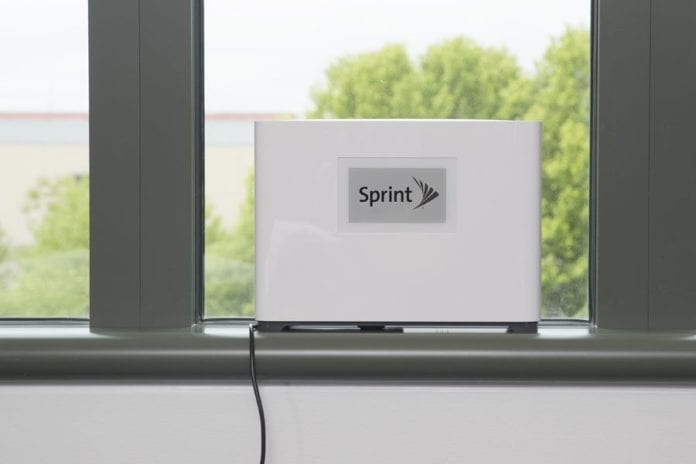The carrier said that tests of Massive MIMO for 5G deployments are very promising
Sprint has already distributed more than 260,000 Magic Box small cells to businesses and consumers across the country, CEO Michel Combes said during a conference call with investors.
“Customers with Magic Box are enjoying significant improvements in indoor and outdoor coverage as well as an increase in average download speeds of 200%,” Combes said.
Sprint said it has deployed these small cells in approximately 200 cities. Sprint plans to deploy more than 1 million units as part of its multi-year roadmap.
Sprint Magic Box is a wireless small cell, which provides indoor coverage averaging up to 30,000 square feet. The small cell’s signal also extends data coverage to Sprint customers in nearby businesses. As part of its next-generation network investment, Sprint is currently densifying its network by deploying more small cells – including Sprint Magic Boxes – to improve coverage and speed for consumers and businesses in cities across the country.
The self-configuring, plug-and-play small cell solution uses an LTE UE relay and is being deployed in consumer and enterprise use cases, Sprint said.
Sprint said last year that demand for Magic Boxes was outstripping the available supply. In response, Airspan Networks, a provider of LTE small cells and backhaul technologies which designed and manufactured the Magic Box, said the company was taking actions to scale production of this small cell solution in order to meet the increasing demand for the product.
Combes also confirmed the carrier’s plans to launch a commercial 5G network in the first half of next year.
“We are deploying innovative 5G technologies such as massive MIMO as we prepare to launch the first 5G mobile network in the first half of 2019. Massive MIMO radios are software-upgradable to 5G NR, allowing us to fully utilize our spectrum for both LTE and 5G simultaneously while we enhance capacity even further with 5G and begin to support new 5G use cases,” Combes said. “We now have a few massive MIMO sites commercially on-air in a few markets and are seeing very promising results, including speed improvements of over 300% while also increasing coverage and cell edge performance.
“Sprint’s priority is mobile 5G and we expect to provide commercial services and devices by the first half 2019. Most importantly, as we look ahead, it’s clear that our proposed merger with T-Mobile will deliver an acceleration of an even greater 5G network with the breadth and depth that we could not do on our own,” the executive said.
Meanwhile, Sprint’s Chief Technology Officer John Saw said the company is very satisfied with the results of the initial 5G tests. “With regards to 5G programs, we are very excited and pleased with the testing results we’re seeing. The linchpin for Sprint to launch 5G is massive MIMO. And from the very early results that we have seen with the sites that we have deployed, we are seeing the expected benefits with some pleasant surprises in terms of how much it improved the uplink performance and the coverage size,” Saw said.
“We actually have sites today carrying live traffic now. So, things are moving fairly quickly. A lot of upgrades with 2.5 GHz now have moved to massive MIMO, based on the results we’re seeing. Every massive MIMO site that we add is going to be 5G-ready or 5G-capable. So, that is certainly good news. When it comes to roaming, we have just started turning up sites with T-Mobile to initiate roaming with them. So, too early to tell, but we have already started turning up sites with them,” Saw added.

